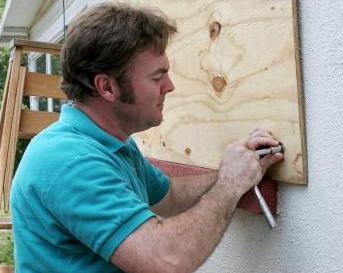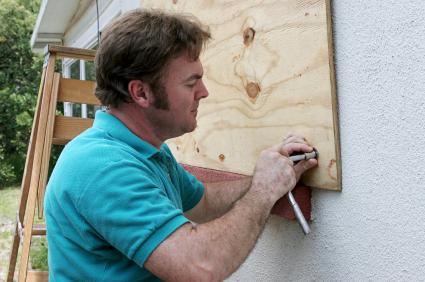 Hurricane Isaac may have come and gone, but hurricane season is still underway.
Hurricane Isaac may have come and gone, but hurricane season is still underway.
Residents of the Gulf Coast and Atlantic area will still need to be ready for storms in the coming weeks, according to the Property Casualty Insurers Association of America.
“It is crucial for coastal homeowners and business owners to be vigilant, not just this week, but over the next few weeks as well,” Chris Hackett, PCI’s director of personal lines policy, said in a statement. “Historically, many of the deadliest and most costly hurricanes have hit at this time of year, including Katrina, Andrew, Charley, Ivan and Hugo, among others. We urge residents along the Atlantic and Gulf coasts to be prepared and alert, and ready to take steps quickly to safeguard their lives, their families and their property.”
Noting that September is usually a peak month for hurricanes, PCI recommends that homeowners, businesses and public policymakers take the necessary steps to ensure that everyone is prepared for the potentially devastating effects of a major storm.
There have already been 10 named Atlantic storms this season. An earlier storm, Tropical Storm Debby, caused an estimated $105 million in insured property losses in Florida in June.
Homeowners can take simple steps to protect their property and assets from becoming a casualty of a storm. PCI has developed the following tips that will help consumers reduce exposure to losses and make certain that they have adequate insurance coverage to recover from the economic damage a catastrophic event.
1. Homeowners should review their insurance policy to avoid any surprises. They should review their property insurance policy, especially the “declarations” page, which summarizes what’s covered.
The standard homeowners insurance policy does not cover all losses and homeowners may need to purchase endorsements or additional policies. A homeowner may need to have the standard homeowners policy, a personal-articles policy, a flood policy, an excess flood coverage and a wind and hail policy to ensure their property is adequately covered.
2. Talk with an agent/insurer to make sure the right policies are in place with adequate limits. An agent or insurance company can help determine the type of policies needed and the amount of coverage. Check whether a policy pays replacement cost, or actual cash value for a covered loss.
Actual cash value takes depreciation into account. As a result, the compensation may be much lower than the retail price of a new item. The cost of rebuilding a dwelling with materials of like kind and quality may differ from the current market value of a home.
In some areas, new building codes will increase the cost of rebuilding. These factors should be considered in the decision regarding how much insurance to buy. If the value of a property has increased for any reason, the insurance should be increased as well.
3. Get flood insurance. It is a good idea for people to buy flood insurance. Inland flooding can occur as far as 500 miles from the site of a hurricane. Flooding is not covered in standard homeowners insurance policies. It may be purchased through insurance agents from the National Flood Insurance Program, which is administered by the Federal Emergency Management Administration.
Homeowners should also be aware that contents or additional living expenses coverage is not automatically included. There is also a 30-day waiting period to get flood insurance, so it is important to act before floodwaters start to rise.
4. Check the amount of deductibles. The deductible is the amount of loss that the homeowner must pay. It may be based on the value of the home or a fixed dollar amount. In many hurricane-prone areas insurance deductibles may range from one to five percent of a home’s value. The higher the deductible, the lower a premium will be.
5. Purchase insurance well in advance of a storm. Most insurers will not offer insurance after a hurricane watch or warning has been issued. Generally this moratorium on new coverage will be in effect for 48 hours after the watch or warning has been canceled. The NFIP also has a 30-day waiting period before the policy is effective.
6. Inventory household items now to speed up claims processing after the storm. Inventory all household items and photograph or videotape them for further documentation. Keep this information and all insurance policies in a safe place, such as a safety deposit box.
7. Store important documents where they will stay safe and dry. Keep the name, address and claims-reporting telephone number of the insurer and agent in a safe and easily accessible place. Property owners should keep a copy of their insurance policies and other important papers with them in a watertight package.
8. Develop an emergency plan before the emergency. Every family should have an emergency plan. Emergency planners suggest discussing the type of hazards that could affect a family and consider the home’s vulnerability to storm surge, flooding and wind.
Determine escape routes from the home and establish a meeting place. Stock non-perishable emergency supplies and a disaster supply kit with enough food and water for three to seven days.
When severe weather is approaching an area, listen carefully to local authorities and take the necessary precautions to stay safe. If given an order to evacuate because of threatening weather conditions, do so. Provide a friend or family member with and contact information. Remember to shut off the water and lock up the home.
9. Perform routine home maintenance now to avoid major repairs later. Mitigation is a critical component in reducing the amount of damage that may occur when a hurricane or tropical storm makes landfall. Adding storm shutters and other retrofitting can help protect a home from strong winds.
In addition, a well maintained home will help ensure that roofing, windows and doors are secure. Structural problems and weaknesses can also be identified and corrected before major damage occurs.
10. Don’t make a house a target for debris. Protect the property by covering all windows with plywood or shutters, moving vehicles into the garage when possible and placing grills and patio furniture indoors. Make sure watercrafts are stored in a secure area, like a garage or covered boat dock.
A typical homeowner’s policy will cover property damage in limited instances for small watercraft, and separate boat policies will provide broader, more extensive property and liability protection for larger, faster boats, yachts and jet skis.












